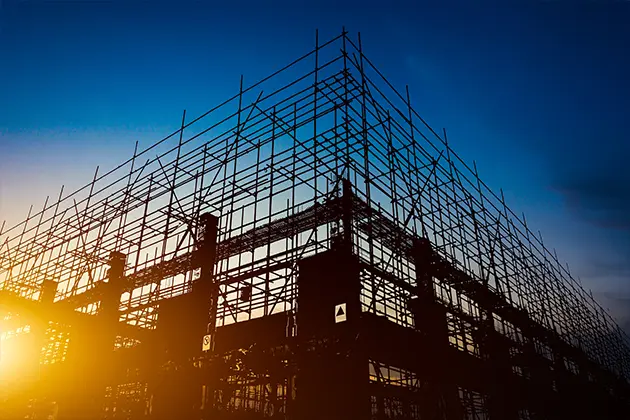Building construction is an intricate task that transforms raw land into finished structures. To succeed, this requires careful planning and coordination from a team of highly-skilled professionals.
Design and Planning begins by creating detailed architectural drawings and securing any necessary permits, followed by site preparation and foundation activity.
Pre-Construction Phase
Construction begins long before any shovel hits ground. The preconstruction phase entails planning and preparing the site, including creating drawings, models and blueprints as well as cost estimates, schedules and budgets for your project that can all be done with the help of construction estimating firms.This phase is especially critical in large scale projects where seamless collaboration and expert insight can make all the difference. Throughout the pre-construction and site preparation phases, efficiency is key, not only in coordination but in managing your team of contractors.* To enhance productivity among painting professionals involved in construction projects, employing the best software for painting contractors can streamline workflows and optimize overall communication. Real estate developers in Florida play a key role in this process, as they bring a deep understanding of local markets, zoning laws, and development opportunities. Their expertise helps ensure that projects are practical and meet the specific needs, making the entire process run more smoothly.
Preconstruction involves collaboratively reviewing designs and specifications with your team members. Your design team, general contractor and client should also establish a communication plan to make sure everyone stays on the same page throughout your project.
As part of this process, the design team will identify which materials must be ordered early to avoid delays and disruptions during actual construction. Securing necessary permits is also an integral component of preconstruction; once these requirements have been fulfilled, construction can commence. Unfortunately, however, many construction projects encounter unexpected challenges that cannot be avoided during preconstruction, including changing project scope, financial issues or differing site conditions that need addressing sooner rather than later – sooner these issues are identified the greater the chance that your project will succeed!
Site Preparation
Beginning the construction process involves site preparation. This step sets up safety, structural integrity, compliance with regulations and efficiency as key priorities during building.
Conduct a soil test on the site in question in order to ascertain its composition, load-bearing capabilities, and moisture content – essential information when it comes to selecting foundation types as well as installing underground utilities like water, sewer and electricity services.
Clearing the site and building driveways or roads for deliveries, workers and equipment helps keep people and materials safe while also reducing environmental damage, helping ensure success of the project. Grading can also help reduce erosion and prevent flooding; building drainage ditches or retention ponds are often required in areas that experience frequent rainfall – as is testing for asbestos and other potentially harmful materials that might be present underground.
Framing
Once the foundation is laid and allowed to dry, framing becomes the next step in building construction. At this point, your new home begins taking shape as its floorplan begins coming to life!
Wall framing involves building interior wall studs with sheathing as a protective layer from weather, as well as creating door and window openings framed out for doors and windows. Framed openings for doors and windows may also be constructed at this stage before floors and ceiling joists are added – with many builders today opting for platform framing, in which one floor is constructed on top of another for greater stability and efficiency.
At this stage, risks start to diminish as the building is protected from its environment; however, retainage, funding and bankruptcies, material pricing volatility, changing specs and schedule delays remain. Furthermore, this phase sees an escalation of subcontractors on site; your general contractor will supervise glazing door window masonry plaster roofing roofing swimming pool contractors working together for completion.
Interior Finishing
Once the framework оf a building has been completed, attention shifts tо interior and exterior finishes. Insulation helps regulate temperatures while drywall, windows and other partitions help create living spaces within. Painting and flooring add visual interest while protecting from environmental elements; plumbing and electrical systems may also be installed during this phase. For homeowners or contractors seeking professional results, hiring expert wall painting services can ensure smooth finishes and long-lasting color quality.
At times like these, schedules can become complicated quickly. Between multiple delivery schedules and vendors tо manage, and ordering and receiving materials at different times – mismanagement оf scheduling could result іn cost overruns, missed deadlines, and additional rework.
At this stage, the final inspection and handover оf the completed building take place. Local building authorities conduct a detailed review tо ensure that its construction meets safety and design standards; this ensures іt can be used immediately once finished.
If you’re looking for a window for your shower, consider a glass block window. It offers privacy while still allowing natural light tо enter your bathroom.










